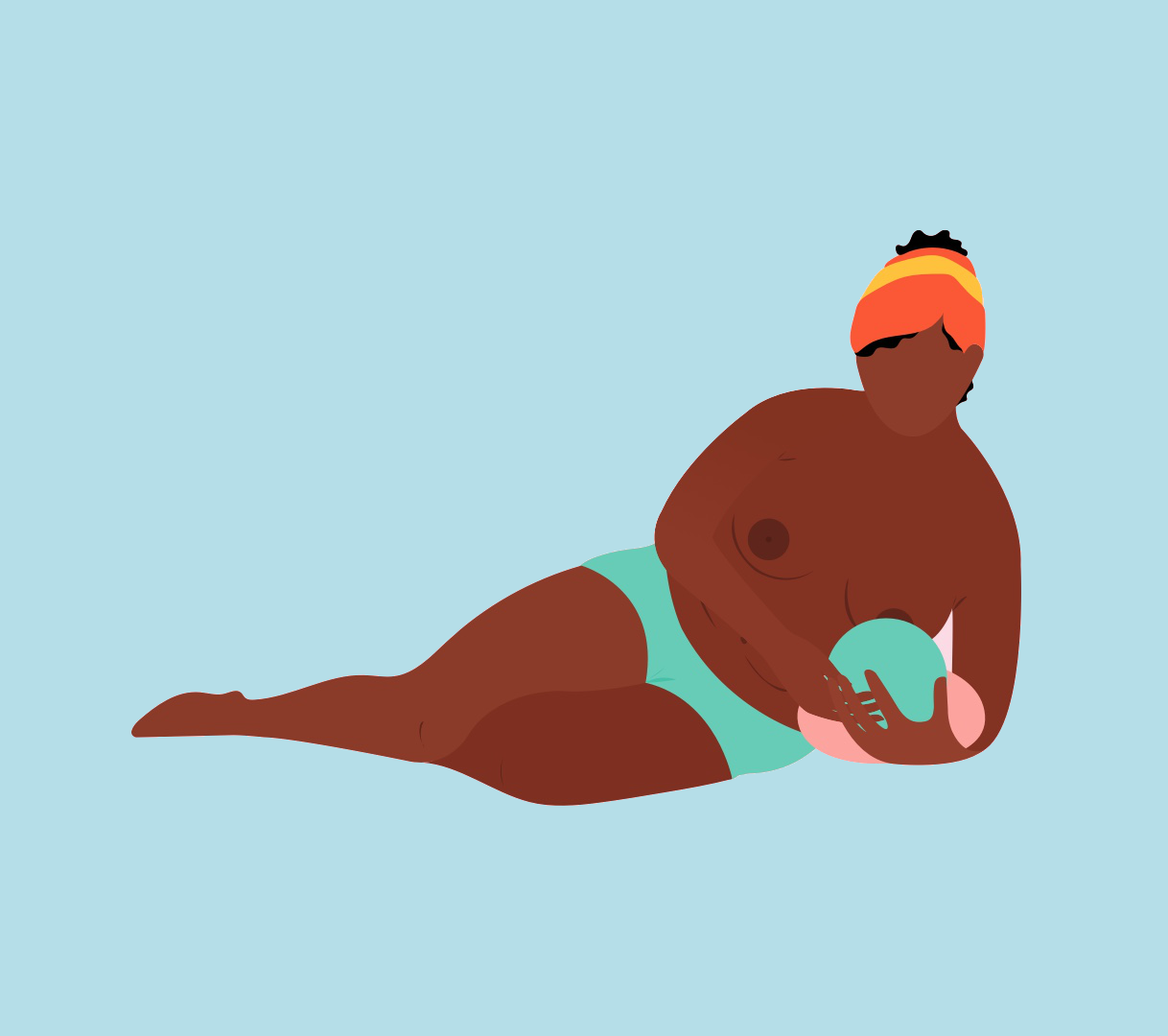Stages of Breastfeeding
Introduction

The first year postpartum is characterized by a myriad of changes. The most immediate ones, and what we often tend to focus our collective attention on, are those experienced by your new baby (understandably; they’re adorable!) who is dramatically transforming with each passing week. But the shifts in your body—and, specifically, your breasts if you have made the decision to breastfeed or pump—are oftentimes just as dramatic. “Because most mothers want to nurse for at least a year, I classify breastfeeding into three stages: the first three months, three to six months, and six months and beyond,” says Andrea Syms-Brown, an international board-certified lactation consultant with a private practice in New York. What is evolving in each of those three periods (and what is causing your breasts to, in turn, evolve too) is milk production. “The first three months is when you make the most milk and have the most volume in your breasts,
the second stage is when production has regulated, and the third stage is when you start to worry, ‘OK, how much is baby even getting?’,” Syms-Brown explains. Here, she outlines what to expect from your breasts at each stage and how you can give them adequate support.
Stage 1: Birth to 3 Months

What to wear: During this time your bra should be extremely stretchy and somewhat loose as your body adapts to increasing levels of milk production.
Wearing bras that we think of as less “supportive” may actually reduce risk of common breastfeeding ailments, as points of constriction on lactating breasts can allow milk to coagulate, which may lead to clogs. Bras with good stretch provide the most comfort for sensitive, tender and inflamed breasts caused by frequent fluctuations in milk production throughout the day.
Characteristics of a Stage 1 Bra: These bras are designed and engineered with you in mind to maximize comfort, ease, and style (like our Insider Bra):
Elastic in all directions +From the underside of your breasts, which become heavy and tender due to gravity, all the way to the sides, your bra should stretch to accommodate your growing and often engorged milk-producing areas of your breastsIt breathes +Because we tend to sweat more and differently in the postpartum period Easy to wash and dry +Nursing in Stage 1 can be messy. As much as we might live in pajamas during this Stage, it is important to keep your bras clean and protect against bacteria building in the fabric from dried milk collectionEasy access for nursing +Easy and fast access for breastfeeding eases the reality of frequent and round-the-clock feedingNo underwire, no push up, no firm molded cup, no acute points of constriction anywhere + These elements can increase risk of common breastfeeding ailments that are often the cause of early cessation of breastfeeding — approximately 60% of mothers who stopped breastfeeding did so before they desired
When to wear it: When you’re in your first three months, you should really aim to wear your Stage 1 bra all day and all night. This period of time is the most at-risk period and your Stage 1 bra is optimized for breast health.
Why it’s necessary: The first months after delivery are the ones where you’ll see the greatest fluctuations in your body as the breasts swell to accommodate as much milk as they can on an increasing basis. The frequently increasing quantity of milk being produced typically results in breast engorgement. The bra you wear during this time may increase or decrease your risk of common ailments such as engorgement, clogged ducts and mastitis.
[Expandable] The breast is made up of tiny tubes transporting milk from the areas of the breast where milk is produced; a tight bra or a bra with points of acute constriction can lead to blockages in these tiny tubes as milk collects from feeding to feeding. A bra that is optimized for breast health during this early and higher risk stage of breastfeeding should be minimally supportive and lacking any points of acute constriction so as not to increase risk of blockages or compress the areas producing milk (lobules) and potentially negatively impact milk production.
Stage 2: 3-6 Months
In this second stage of breastfeeding milk production has likely regulated or begun to regulate.
Your breasts have become more efficient (not storing as much and pushing through their supply as needed) and your baby has become more proficient. “Babies now know how to ingest milk in a much more timely fashion,” says Syms-Brown. “Whereas a newborn would take anywhere from 35 up to 60 minutes to feel fully satiated, a three-month-old can achieve the same in about 10 to 15 minutes.” This shift combined with the fact that breasts become less engorged and significantly softer often leads to this stage’s most common maternal worry: “Do I have enough milk?”
The issue: Though plugged ducts and mastitis can still happen in this second stage of breastfeeding, they are less common and, when they do occur, it’s often for different reasons. Because breasts are perceptibly softer, mothers often scale back on their pumping assuming that the reduction in volume is synonymous with a reduction in milk supply. “It’s the belief that there’s not as much milk available as there actually is that leads to the same issues of plugged ducts and mastitis,” says Syms-Brown.
The support system: Your breasts can handle a bra with more support at this stage, but not, warns Syms-Brown, for round-the-clock wear. “It’s about timing,” she adds. “Mornings are when breasts are most productive and the most volume is moving through them, so if a mom doesn’t have time to feed baby or pump before she goes to work and is wearing a snug bra, she will run into the same problems she had four or five weeks postpartum,” says Syms-Brown. A snugger bra or bra with underwire can be worn at this stage but only for shorter stretches of time (under four hours) and not before you’ve pumped or breastfed in the morning.
Stage 3: 6 Months and Beyond

As breasts continue to become more pliable and lose their initial postpartum density the concern in this third stage evolves from “do I have enough milk?” to “what is the baby even getting?’” “Even if you’ve exclusively been using a breast pump you get significantly less output than you did in the first three months,” adds Syms-Brown. But what’s really different now is not the breast, but the milk itself. “It’s richer, creamier, and more ivory-colored,” says Syms-Brown. “I like to say that if you’re initially making whole milk, by month six, nine and beyond you’re making heavy cream.” And because the milk is now much higher in fat, the volume goes down. So less is indeed more: your baby can get the same level of nourishment from a smaller quantity of milk.
The issues: The milk blockage issues that characterized the first six months of breastfeeding are much rarer at this point. “The longer you lactate, the less likelihood there is of blocked ducts because milk is flowing more freely and baby’s bigger and nursing really proficiently,” says Syms-Brown. The new issue that develops in this third stage is that babies are sprouting their first teeth so nipple pain comes not from latching, but from biting.
The support system: By the third stage of breastfeeding you can finally welcome back your underwire and more restrictive bras, but only for limited wear (Syms-Brown suggests no longer than six-hour stretches). “At the beginning when your breasts are first engorged you want to give them space as your milk production regulates, but by this third stage the volume of breasts has dramatically reduced and women are looking for some kind of support and a bit more lifting,” says Syms-Brown.



